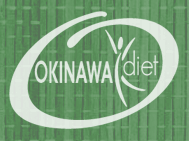Slate ranks Okinawa diet high in review of popular diets on MSN
August-18-2004
From slate.msn.com:
In a recent review of "trendy" diets in Slate on MSN, the Okinawa diet came out on top: "The Okinawa Program had the best recipes of the diet books sampled". The reviewer, Dan Crane, was particularly fond of our Okinawan Blueberry Pancakes.
While it is good to be appreciated, we had to chuckle over the inclusion of The Okinawa Program in a review of "trendy" diets. We'll have to ask some of our centenarians how they feel about being trendsetters for the American public!
We were also a little perplexed over the choice of The Okinawa Program in a comparison of popular diet books rather than The Okinawa Diet Plan -- wouldn't the latter have been the more logical choice? Oh well, we appreciate the kind words, nonetheless.
Below are some highlights from the article:
Best Recipe
The Okinawa Program had the best recipes of the diet books sampled. Highlights are Okinawan Blueberry Pancakes, Zesty Potatoes Wasabi Style, and Beef Teriyaki with Cabernet Sauce.
The Skinny
Okinawa, a group of islands off of mainland Japan, has the highest life expectancy in the world and among the lowest rates of cancer and heart disease. Based on a 25-year study of the centenarians of Okinawa, The Okinawa Program offers a diet, exercise, and lifestyle program designed to help the reader achieve health and longevity.
Stressing a diet high in "good carbohydrates" (fruit, vegetables, and whole grains) Omega-3-containing foods (oily fishes like salmon or tuna, Omega-3 eggs, flaxseed), flavonoids (tofu and soy products), and good fats (olive and canola oils), the Okinawa Program differs from the other diets in that it does not include an initial strict two-week induction phase and also includes more carbs and soy products. There is a four-week program for "everlasting health," with "Western" and "East-West" menu variations, fitness suggestions (walking, tai chi), psychospiritual prescriptions (e.g., "Reach out to someone with whom you have lost contact"), and integrative health recommendations (herbal tonics and vitamins). While the four-week program is not designed specifically for weight loss, it's likely that if followed, one would drop a few pounds and perhaps become addicted to the healthy lifestyle approach
that combines eating well, regular exercise, healing herbs, and spirituality.
Chewing the Fat
The authors of the Okinawa Program knock the anticarb trend and suggest that Americans are being misled by the no-carb diets. Rather than focusing on how many carbs a food has, the authors suggest looking at food's Glycemic Index, a measure of how much one's blood sugar rises after eating a particular food. Eating high GI foods means large amounts of glucose are released into the body. A large amount of glucose leads to the release of excess insulin to get rid of the extra glucose, which can lead to adult onset diabetes and obesity. Though the Glycemic Index is similarly discussed in both Atkins and South Beach, those diets have been boiled down to a simple low/no-carb diet regimen. Like many of the other diet books, the Okinawa Program includes the Glycemic Index of common foods but suggests that the Glycemic Index has been misinterpreted, resulting in an "irrational fear of carbohydrates."
Can't Touch This ...
Saturated fats (animal and dairy fat chicken without the skin is OK red meat) and trans-fats (cakes, cookies, chips) are strongly discouraged.
Authors' Life-Changing Miracle
Going to meet their first Okinawa centenarian, the authors encountered a sprightly
man gardening in his yard that they assumed was the son of the man they were seeking to study. The miracle: He was 100 years old!
For Lovers Of ...
Carbs! "A healthy diet is high in unrefined, complex carbohydrate, high in fiber, and relatively low in fat, protein, and calories. So break out the bagels (whole-grain, please) because carbohydrates are back in!"
Do-ability
The book has both "Western" and "East meets West" diet options and is a guide to healthy eating that should be achievable by almost anyone. Living to age 100, on the other hand, might not be so simple or desirable!

